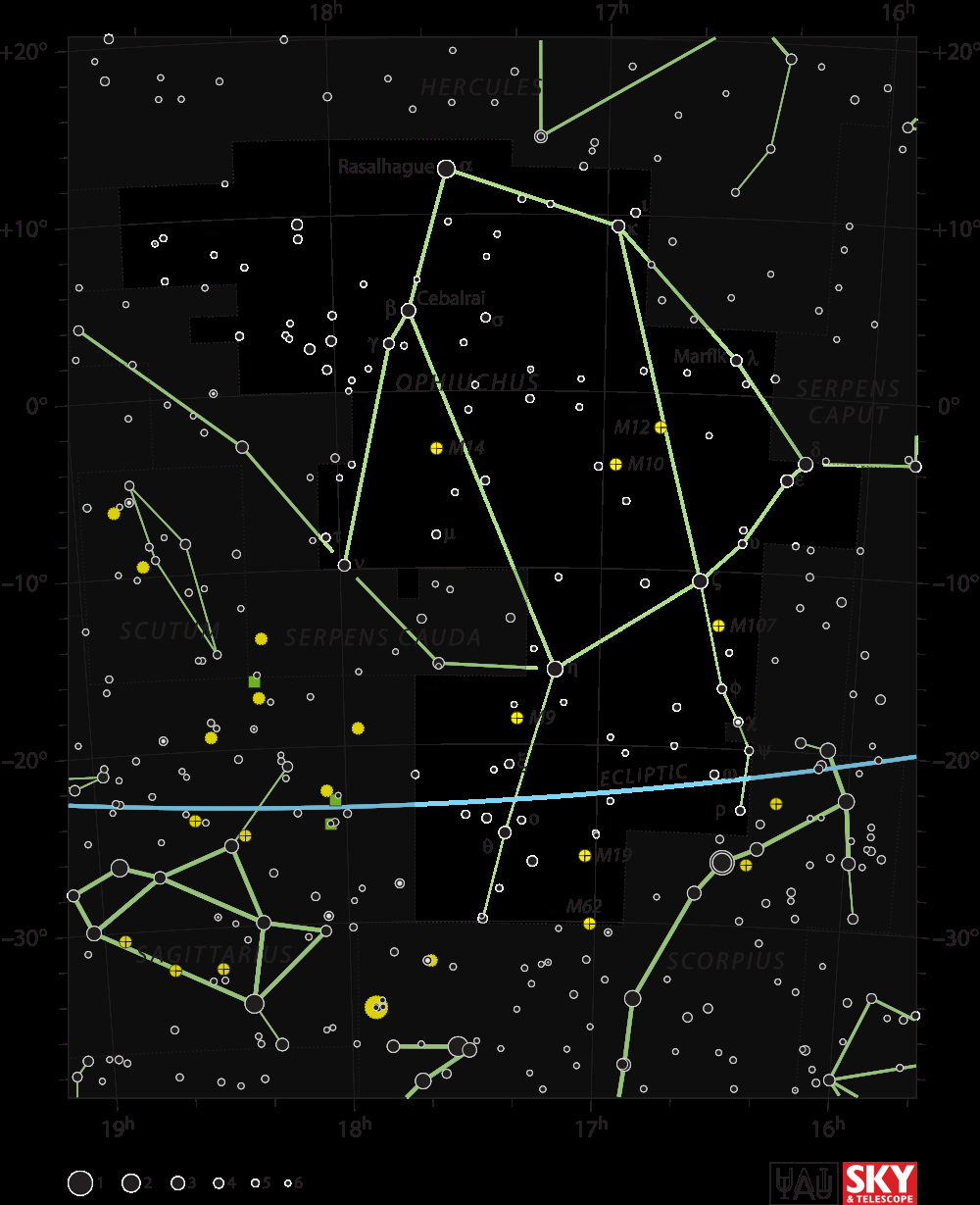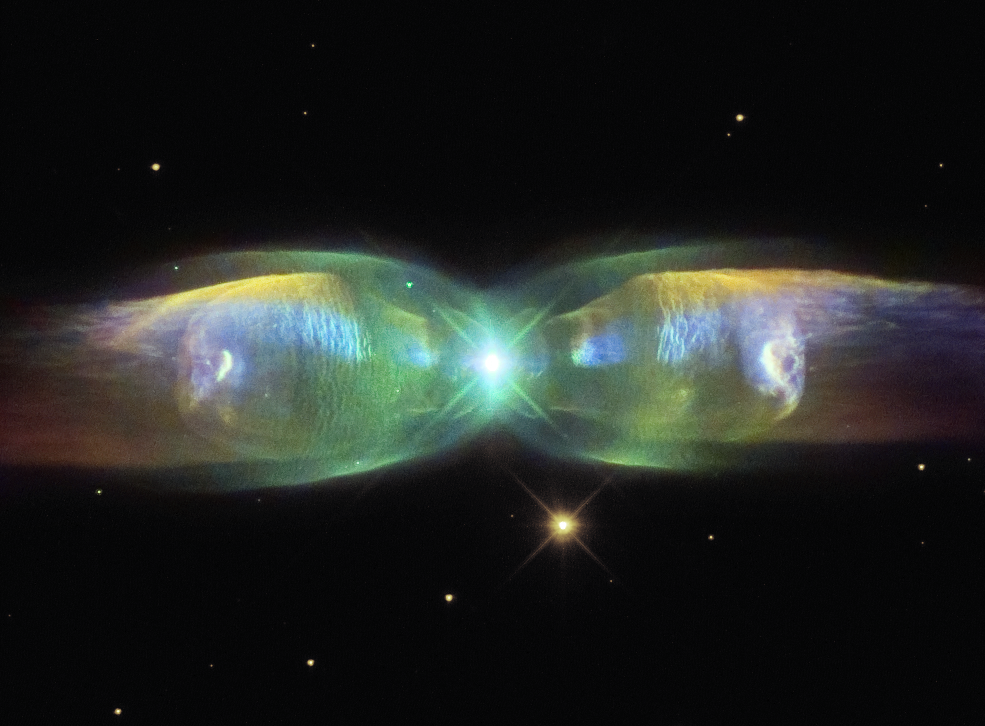
By IAU and Sky & Telescope magazine (Roger Sinnott & Rick Fienberg) [CC-BY-3.0], via Wikimedia Commons
"The Serpent Bearer"

By IAU and Sky & Telescope magazine (Roger Sinnott & Rick Fienberg) [CC-BY-3.0], via Wikimedia Commons
Abbreviation: Oph
Genitive: Ophiuchi
Constellation family: Hercules, Zodiac
Nearest constellations: Aquila, Hercules, Libra,
Sagittarius, Scorpius, and Serpens
Right ascension: 17.18h
Declination: -4.24°
Visible between latitudes: +80° and -80°
Square degrees: 948
Luminary: Rasalhague (Alpha Ophiuchi)
Named stars: Rasalhague, Cebalrai, Yed Prior, Yed Posterior
Notable deep sky objects: M9, M10, M12, M14, M19, M63, M107, IC 4665, IC 6404, NGC 6218, NGC 6237, NGC 6240, NGC 6333, NGC 6369, NGC 6402
Ophiuchus is a large constellation lying along the celestial equator. It is best seen in July.
While most of the stars in Ophiuchus are relatively dim, the constellation can be recognized by its distinctive teapot shape. It contains Barnard's Star, which is a red dwarf star only six light years away, making it the fourth-closest star to the Sun after stars in Centaurus.

By Johannes Hevelius [Public domain], via Wikimedia Commons
While it is not officially classified as one of the constellations of the Zodiac, Ophiuchus lies along the ecliptic, or the path that the Sun appears to follow in the sky throughout the year. All of the other constellations located along this path are considered part of the Zodiac.
In Greek mythology, Ophiuchus represents Asclepius, the god of medicine. He was the son of Apollo and raised by the centaur Chiron, who taught him how to heal. Asclepius' skills increased until he was able to bring the dead back to life, which caused Zeus to kill him with a thunderbolt for disrupting the natural cycle of life.
Asclepius was later placed in the sky and depicted as holding a snake (Serpens). Due at least in part to the association between Asclepius and healing, snakes continue to be a common symbol of medicine.
NGC 6240 (interacting galaxies):

By NASA, ESA, the Hubble Heritage (STScI/AURA)-ESA/Hubble Collaboration, and A. Evans (University of Virginia, Charlottesville/NRAO/Stony Brook University) [Public domain], via Wikimedia Commons
M2-9 (Minkowski's Butterfly, planetary nebula):

By Judy Schmidt [CC-BY-SA-3.0], via Wikimedia Commons
Rho Ophiuchi (star forming region):

By ESO/DSS 2 [CC-BY-4.0], via Wikimedia Commons
NGC 6369 (the Little Ghost Nebula, remnants of a dying star):

By NASA and The Hubble Heritage Team (STScI/AURA) [Public domain], via Wikimedia Commons
IRAS 18090 (interacting galaxies):

By NASA, ESA, the Hubble Heritage (STScI/AURA)-ESA/Hubble Collaboration, and A. Evans (University of Virginia, Charlottesville/NRAO/Stony Brook University) [Public domain], via Wikimedia Commons